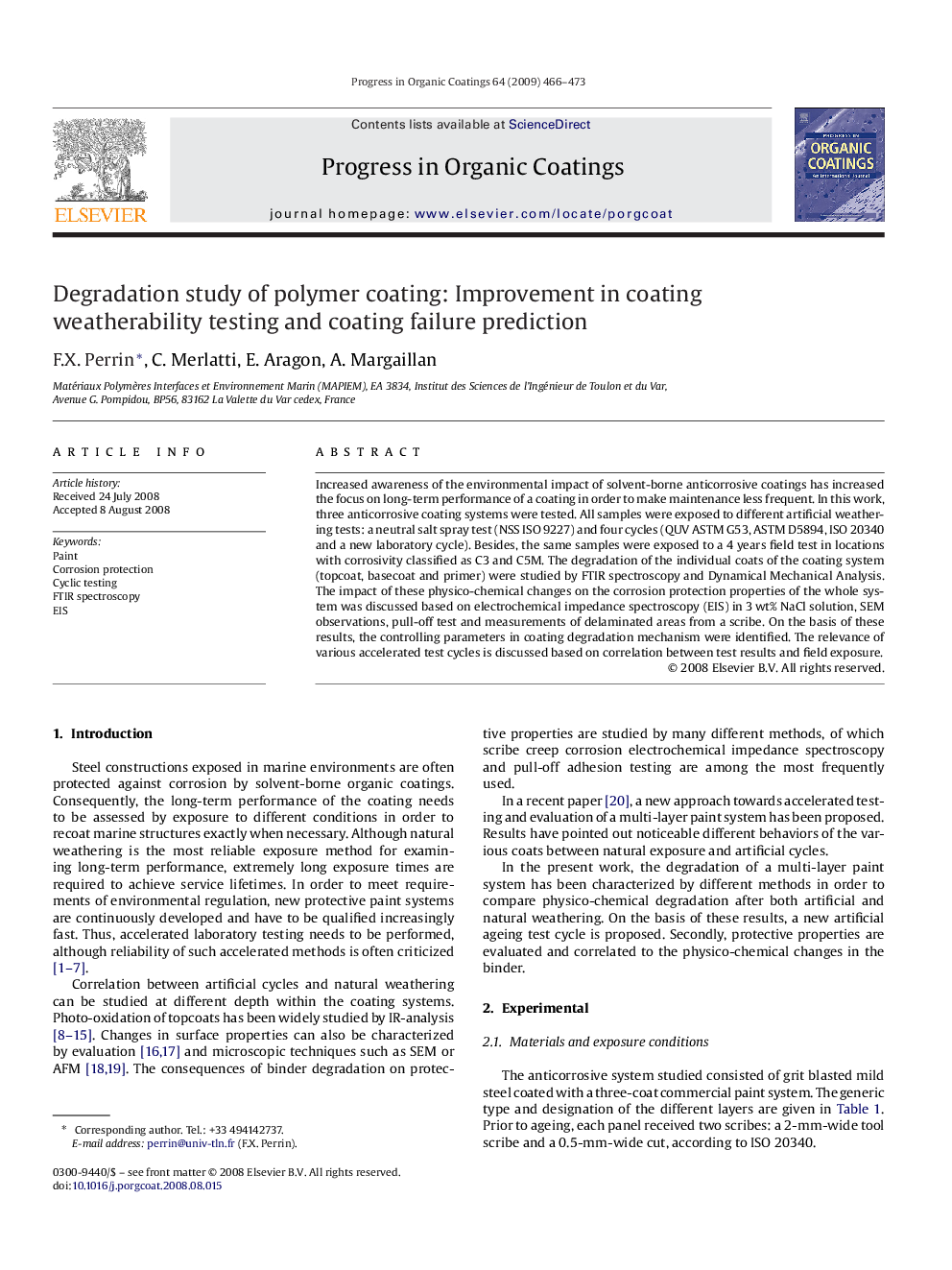| Article ID | Journal | Published Year | Pages | File Type |
|---|---|---|---|---|
| 693763 | Progress in Organic Coatings | 2009 | 8 Pages |
Abstract
Increased awareness of the environmental impact of solvent-borne anticorrosive coatings has increased the focus on long-term performance of a coating in order to make maintenance less frequent. In this work, three anticorrosive coating systems were tested. All samples were exposed to different artificial weathering tests: a neutral salt spray test (NSS ISO 9227) and four cycles (QUV ASTM G53, ASTM D5894, ISO 20340 and a new laboratory cycle). Besides, the same samples were exposed to a 4 years field test in locations with corrosivity classified as C3 and C5M. The degradation of the individual coats of the coating system (topcoat, basecoat and primer) were studied by FTIR spectroscopy and Dynamical Mechanical Analysis. The impact of these physico-chemical changes on the corrosion protection properties of the whole system was discussed based on electrochemical impedance spectroscopy (EIS) in 3Â wt% NaCl solution, SEM observations, pull-off test and measurements of delaminated areas from a scribe. On the basis of these results, the controlling parameters in coating degradation mechanism were identified. The relevance of various accelerated test cycles is discussed based on correlation between test results and field exposure.
Related Topics
Physical Sciences and Engineering
Chemical Engineering
Process Chemistry and Technology
Authors
F.X. Perrin, C. Merlatti, E. Aragon, A. Margaillan,
